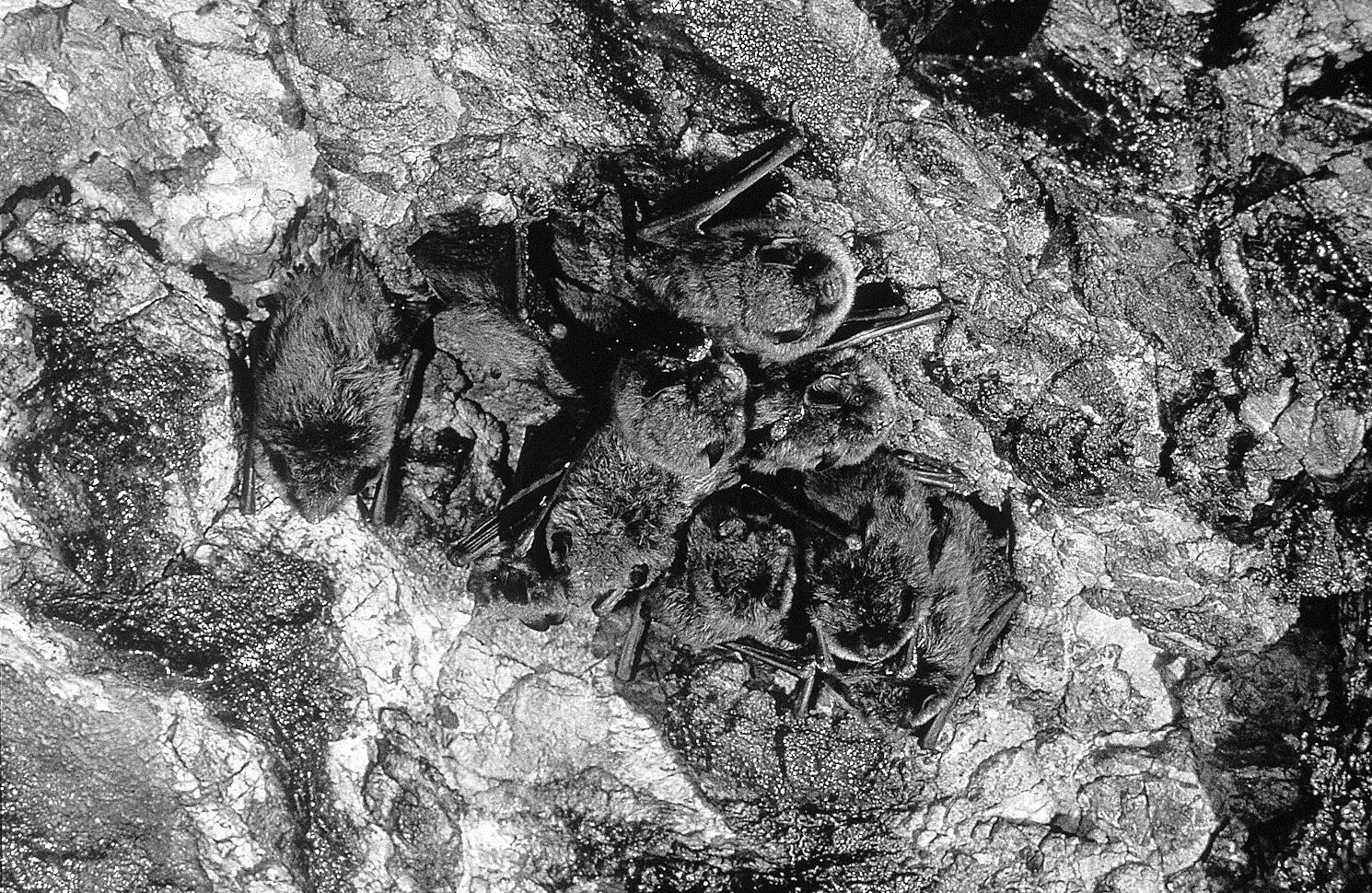LONG-LEGGED MYOTIS
Myotis volans (H. Allen 1866)
Order Chiroptera : Family Vespertilionidae
DESCRIPTION. A rather large Myotis, with relatively long tail, short ears, and moderately large foot; underside of wing membrane well furred out as far as line joining elbow and knee; ratio of tail to head and body averaging 0.90–0.94; tibia relatively long, ratio of foot to tibia near 0.40; pelage full and about 7 mm long on back; profile of braincase rises abruptly from rostrum, giving a pug-nosed effect; ears short and rounded at tip. Dental formula: I 2/3, C 1/1, Pm 3/3, M 3/3 × 2 = 38. Averages for external measurements: total length, 93 mm; tail, 45 mm; foot, 7 mm; ear, 13 mm; forearm, 39 mm. Weight, 5–9 g.

DISTRIBUTION. A western bat that occurs in Texas primarily in the central range of the Trans-Pecos region, but a single individual has been taken from Knox County in the Rolling Plains. This was probably a wandering individual, and resident populations are not believed to inhabit this region of Texas.

SUBSPECIES. Myotis v. interior.
HABITS. Over much of their range, long-legged bats are forest inhabitants, and they prefer high, open woods and mountainous terrain. Nursery colonies, which may contain several hundred individuals, form in summer in places such as buildings, cliff crevices, and hollow trees. These bats apparently do not use caves as day roosts, although they may use such sites at night. In winter, they hibernate in caves and mine tunnels, but no winter records are available from Texas.
These bats emerge shortly before dark to forage around cliffs, trees, and over water. They are strong, direct fliers, and certain flyways seem to be used regularly. They feed mainly on moths but have been known to eat a variety of other soft-bodied insects.
Only one young is born annually to the females. Copulation occurs in late summer, and females store the sperm until ovulation occurs in the spring. In Texas parturition probably takes place in June or early July.
POPULATION STATUS. Common, spring–summer–fall resident. The long-legged myotis appears to be fairly common in appropriate habitats throughout its range in Texas.
CONSERVATION STATUS. The IUCN status of the long-legged myotis is least concern, and it does not appear on the federal or state lists of concerned species. There is a need for more fieldwork to determine its population abundance in Texas so that any future potential threats can be accurately assessed.
From The Mammals of Texas, Seventh Edition by David J. Schmidly and Robert D. Bradley, copyright © 1994, 2004, 2016. Courtesy of the University of Texas Press.
Natural Science Research Laboratory
-
Address
Museum of Texas Tech University, 3301 4th street, Lubbock, TX 79409 -
Phone
806.742.2486 -
Email
nsrl.museum@ttu.edu

